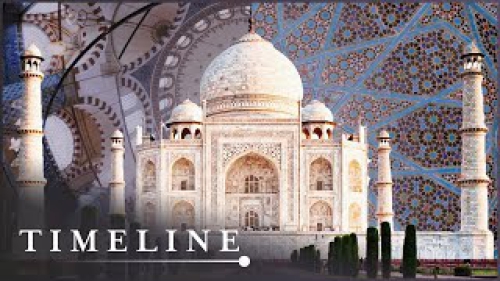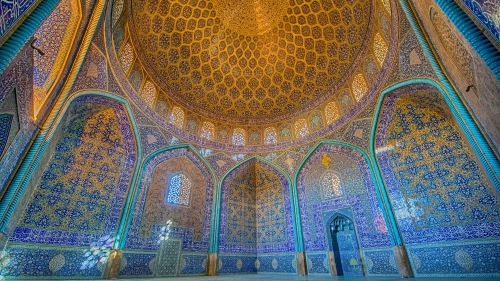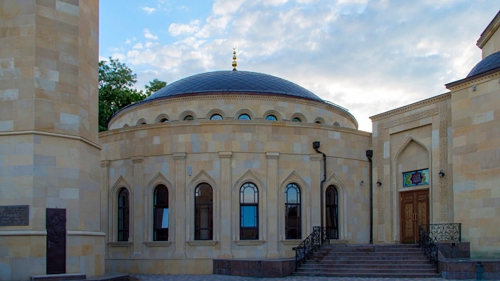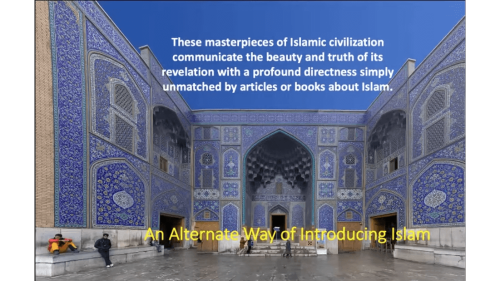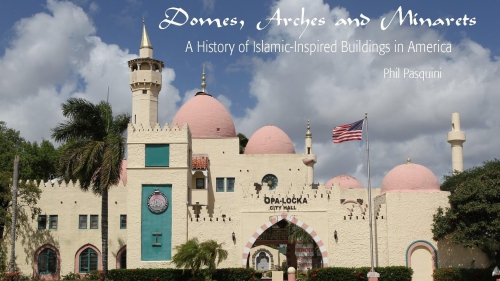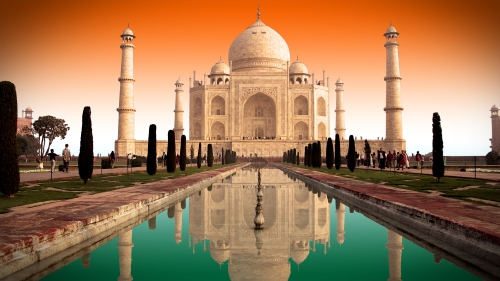The Humanism of Da Vinci's "Mona Lisa" and Michelangelo's "David"

Renaissance humanism manifested itself mostly in philosophy, art, architecture, literature, science and technology. An example are the artistic outputs of Leonardo da Vinci (d. 1519), Michelangelo (d. 1564), Raphael (d. 1520) and many others. Their masterpieces are priceless and their personal reputations insurmountable. The original artistic productions are more jealously guarded than the “Holy Grail”. Why is it so?
Some people speak about new techniques, new materials, new styles, new art formulas, new perspectives and narratives, etc. These are all true, albeit only partially so.
The truth is that the art of Renaissance humanism was alive, dynamic, inviting, intriguing, fascinating, challenging, revealing, assertive and proselytizing – all at once.
The art captured the spirit of humanism and contributed to the demise of the spirit of religion. It was the incubator as well as conservatory of the former, and the necropolis of the latter. It was a window into a new world of dreams and opportunities. And finally, such art was a portal to another dimension in quest of the truth affirmation and self-actualization.
The art masterpieces were the “holy” revelations of humanism, contributing to the formation of the ideology of human-centrism or anthropocentrism as well. As such, in next to no time they grew into sacrosanct artefacts that were incomparable. Their executors were elevated to the degree of visionaries and prophets. Simply put, the masterpieces became the sacred symbols, emblems and icons of the new “religion” of humanism. Venerating them meant devotion, looking down on them meant heresy.
Those masterpieces were lifelike. They promoted life and gusto. They featured full-fledged personalities, identities, emotions and passions, to the point that sensual and sometimes outright erotic elements were applauded under the pretext of expressing liberty and optimizing humanness. They in addition communicated to and with beholders, and invited to be communicated to and with. There was less and less ambiguities in those depictions, and even if there were some, they were cleverly manipulated for the sake of giving emphasis to the intended clarity and vitality.
Even though human beings were the art’s focal point, the landscapes and architectural settings serving as backdrops were becoming as important. A total existential reality with all its variations was now the target, with man in the foreground - free, empowered and keen - taking the helm. No supernatural entities or powers were to decree what and how ought to be done. There was nothing to obstruct the vision and the course of action. The new art tried to determine the new meaning of man and his authoritative place not just on earth, but also in the universe at large.
It is said that art is the daughter of religion and that every art in a way is a religious art, in the sense that it embodies, plus disseminates, sets of beliefs, standards and values. Accordingly, it would be wrong to assert that the art of Renaissance humanism was secular. It was mostly non-conformist and partly non-Christian, but never non-religious, in a manner befitting its philosophy and purpose. It substituted one ideology and its corpus of tenets and norms with another, one piety with another, and one divinity with another.
The battle was between the universal Christian God and the universal Renaissance man, and between the fading Christian faith and the rising agency of man steeped in humanity’s eternal right of independent choice. The conflict was between the kingdom of heaven and the kingdom of earth.
By the way, the majority of the Renaissance protagonists still regarded themselves as Christians, however, the writing on the wall boded poorly for the likelihood of sustaining fruitful and happy relationships, let alone conjuring up happy endings. The cracks developed into rifts, and the rifts were soon to develop into ruptures. A total split-up was in the offing, proving that the hitherto marriage was one of convenience and was a match made neither in heaven nor on earth.
Leonardo da Vinci’s “Mona Lisa”
Take by way of illustration Leonardo da Vinci’s work of genius Mona Lisa, which is, according to “Independent”, the most visited, most written about, most sung about, and most parodied work of art in the world. It is said about the painting that it is revolutionary and avant-garde because it demonstrated a new artistic formula featuring the three-quarter view of a figure against a landscape, the natural and a bit of architectural setting, the hands joined in the foreground, the spatial coherence, the atmospheric illusionism, the monumentality of the composition, and the sheer equilibrium. The work displayed such a controlled majesty as has never seen before (Bulent Atalay, Math and the Mona Lisa; Cecile Scaillierez, Mona Lisa – Portrait of Lisa Gherardini, Wife of Francesco del Giocondo).
However, these constitutive and experiential components, though fundamental, do not tell the whole story. They do not paint the full picture of Mona Lisa’s humanistic transcendentalism and so, its invaluableness and irreplaceability. Mona Lisa is special in many way, but its ethereal uniqueness lies primarily in its humanisticly holy disposition.
Mona Lisa is a person with meticulous anthropomorphic character. She is emphatic and possesses a self-confident personality. She defies conventions and norms. She is as much an artistic prototype as an existential paradigm. She epitomizes liberty and keenness. Hers is not merely abstract and redolent beauty, but also functional beauty. That beauty is inside her, on her, and everywhere around her. That beauty is incarnated in life and in human beings as masters of life. That beauty is now and here. It is a gift that should be attainable and enjoyed by everybody.
Life is synonymous with beauty. Both are universal and meant for man to be enjoyed. However, to do so, imposing canons and enforcing standards – especially those of conventional religions - are not welcome. They impair life and disfigure beauty. Life, therefore, is to be lived instinctively and to the fullest, whereas beauty is to remain subjective and in the eye of the beholder. Life is to be true to itself and beauty a vehicle for expressing and validating the truth. Unlike science which is exact, art must be profound and true. Mechanical precision and mathematical accuracy are not the object of any art. Art is invalidated and rendered ugly by such procedures. Science stresses what an item outwardly is, art seeks what it isn’t. Hence, beauty is the splendour of any religiosity.
That said, Mona Lisa denotes a revealed testament of humanism. It is one of the miracles of humanism that treated with contempt the status quo. Mona Lisa is an ambassador for the dignity and humanity of all people. She possesses her enigmatic expression, and even her individual identity was hard to ascertain, which was perhaps deliberate, in that personal identities and attributes did not really matter. What mattered was the actuality that Mona Lisa was utterly human, standing for a microcosm of life and the human race. Her beauty was on the grounds of innermost complexity residing hidden in outward simplicity.
Mona Lisa was free and sovereign. She radiated positivity. Her smile - which to many art experts is the most special and most mysterious aspect – symbolises courage and budding exuberance. She watches over the world, timidly expresses, but readily shares her emotions, and ultimately invites to her world of originality and wonders. As if she is willing and ready to talk to her suitors, and indeed she does talk to whoever is ready and willing to listen. The feeling is reciprocal, and so is communication between the two sides (worlds). To understand Mona Lisa, it goes without saying, one must be honest and fair-minded. One must be a devotee.
Michelangelo’s “David”
Another example is Michelangelo’s David, a marble statue that is a chef-d'oeuvre (masterpiece) of Renaissance sculpture. Apart from most things mentioned in relation to Mona Lisa, David exuded additional messages. He is a standing heroic male nude, a representation of strength and youthful beauty. He looks muscular and strong, and is tense and ready for a confrontation, purportedly with Goliath. He is determined and, with a warning glare, his eyes are fixated on a target in a distance, perhaps also towards a dimension in infinity.
Even though commissioned for the cathedral of Florence, David ended up partly serving the interests of Christianity and mainly the interests of the evolving Renaissance humanism. So much so that it is said that David “continued to serve as the prime statement of the Renaissance ideal of perfect humanity. Although the sculpture was originally intended for the buttress of the cathedral, the magnificence of the finished work convinced Michelangelo’s contemporaries to install it in a more prominent place, to be determined by a commission formed of artists and prominent citizens” (Britannica).
Thus, David’s originally intended purpose associated with Christianity was rescinded and, instead, was placed at the disposal of a “higher” and more “consequential” humanism order. It was more suitable for the latter. From the very beginning, although the statue was ostensibly Christian, it was deeply at variance with it. It was humanisticly daring. Moving it from the domain of Christianity to the more democratic one of humanism was a significant operative upgrade for David. It was a step in the “right” direction.
David’s appearance and generated aura challenged the official narratives deposited in the Bible. The absence of Goliath possibly suggested the existence of another more potent rival, that which existed far off in the spiritual and moral ambits. It yet suggested another type of rivalry, that between man on earth and God – in fact all gods - in heaven, or in any other imaginary realm.
David’s standing alone, fully determined and prepared, also implies that man is the sole sovereign of the life on earth. He is fully naked, but his nakedness is not a cause for shame or embarrassment. Rather, it promotes authenticity and spontaneity. It likewise upholds all-inclusive humanness and naturalness as the objectives of humanism.
The depiction of nakedness additionally sends a signal that man is what man is. Nothing is to be added to, nor taken away from, his configuration. Every facet of his being is to be celebrated, just as every decision he makes and every proclivity he generates is to be venerated.
Man is truthful and has nothing to hide, neither privately nor openly. He has everything to win and nothing to lose. The only being that possesses absolute value or authority in the entire universe is none other than man himself. He is “the measure of all things”.
It follows that David was the first version of superman, the first example of an ideal human being. Together with Mona Lisa, David is the most studied and most explored piece of art. What Mona Lisa is in the field of painting, David is in the field of the art of sculpture. Both signify modes of fine or creative art which is appreciated mainly for its intellectual, aesthetic and imaginative ends.
Man does not need heaven anymore; he can create one down on earth. One day, maybe, heaven may need him. That is why immortality, perpetuity, absolute lordship and flawlessness were always the supreme goals of religious objectors and mutineers. They only wished to be authentically human and to live unconstrained, and in such a state to steer their bark towards a dreamland.
The shackles of religion(s) – and of all forms of tradition - were seen as inhibiting. Breaking free from them was the only option for moving forward and for fulfilling man’s remarkable potential. In the earthly heaven man will be the creator, master, benefactor, beneficiary, hero and villain. He will rise and fall, and rise again. He will do anything he wants. Earth is his bastion and his first and last abode. It is his turf.
In view of that, David’s projected strength and intensity are the sign that man has what it takes to succeed all by himself. What he needs more than anything else is to triumph over his weaknesses and fears and to be resolute and ruthless. Man needs to conquer himself first and foremost. After that, possibilities are infinite and sky is the limit.
Nobody is in a position to know man better than man himself. Therefore, nobody – including deities - is entitled to dictate man’s thoughts and life directions. He is ready to take matters into his own hands, living and dying with the consequences of his decisions. Man is born to control, not to be controlled. He is born to be his own saviour.
Man - as a result - is beautiful, intelligent, resourceful and powerful. Ugliness and disgrace are but in the precincts of human restrictions, subjugations and inner enslavements. Renaissance humanism was a time when concepts and standards were redefined and boundaries redrawn. Mona Lisa and David were the most critical pivots. They were the most essential pillars in the conceptual framework of Renaissance humanism.
Topics: Art, Islamic Art And Architecture
Views: 3885
Related Suggestions








